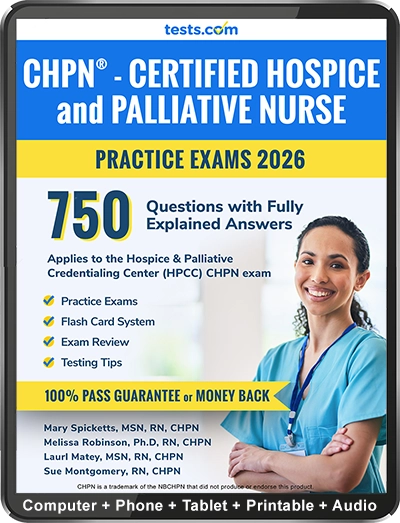2026 Edition
CHPN Practice Exam
Study Online Instantly

Click to Save 50% Now
2026 Edition

Take this free CHPN practice test to study for the Hospice and Palliative Nurse certification exam.
The CHPN exam is a 3 hour exam covering 150 multiple choice questions. The CHPN exam focuses on five domain practice areas: Assessment and Planning, Pain Management, Symptom Management, Support, Education and Advocacy and Practical Issues.
For complete practice, use our 750 Question CHPN Practice Exam Kit with fully explained answers, testing tips and more. It is written by CHPN experts and nursing instructors. Our interactive test platform allows you to simulate the exam. Take as many practice tests as you need. There's no time limit or recurring charges.
For more information on the CHPN exam and test prep, see our CHPN Study Guide.